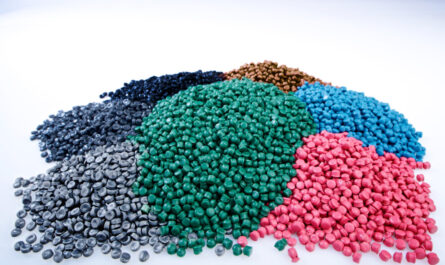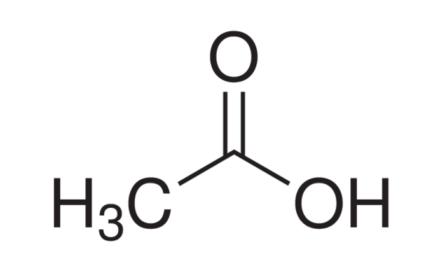Silicon carbide (SiC) is a semiconductor material that has properties making it suitable for devices that operate at high temperatures, high voltages, and high frequency ranges. Once limited to niche applications, SiC technology is now being applied to many new power switching and RF applications with major improvements in performance and efficiency compared to traditional silicon.
Properties of SiC
Silicon carbide is a compound of silicon and carbon. The chemical bond between these elements results in certain material properties that make SiC superior to silicon for many power applications. Some of the key properties of SiC include:
Wide Bandgap: SiC has a bandgap of 3 eV, compared to 1.1 eV for silicon. This larger bandgap allows SiC devices to operate at higher temperatures, up to 600°C compared to 150°C for silicon. Additionally, a wide bandgap means SiC devices can withstand higher electric fields before breakdown.
High Bulk Electron Mobility: Though the electron mobility of CVD Silicon Carbide is lower than silicon, it is still quite respectable at around 900-1000 cm2/V-s at room temperature. This leads to fast switching times in power devices.
High Breakdown Electric Field: SiC has a critical electric field ten times larger than silicon, around 2-3 x 106 V/cm. This property allows SiC power devices to operate at much higher voltages than silicon devices of similar dimensions.
High Thermal Conductivity: At 3.7 W/cm-K, the thermal conductivity of SiC is three times higher than silicon. Improved heat dissipation allows SiC devices to handle higher current densities.
Chemical Inertness: SiC is highly resistant to corrosion and has excellent high-temperature stability in oxidizing environments up to 1000°C. This durability makes SiC attractive for harsh operating conditions.
These exceptional material properties enable SiC devices to outperform their silicon counterparts in terms of efficiency, power density, frequency capability, and operating temperature—opening up new avenues for power system design.
CVD Growth of SiC
Historically, SiC crystals were grown using an antiquated physical vapor transport (PVT) method. However, for many years the semiconductor-grade material produced was of insufficient quality and size for commercialization. In the 1990s, advances in SiC crystal growth using chemical vapor deposition (CVD) fundamentally changed this picture.
In the CVD process, reaction gases like silane (SiH4) and a carbon-containing gas like propane (C3H8) are introduced into a hot-wall reaction chamber while maintaining a low pressure. By carefully controlling parameters like gas flow rates, chamber pressure, and substrate temperature, SiC vapor species deposit on and epitaxially grow on a SiC wafer or other substrate. By repeating the deposition at different locations on the substrate, high-quality, large-area single-crystal SiC films can be fabricated.
Modern SiC CVD systems have allowed wafer sizes to expand from 2 inches to 6 and even 8 inches in recent years. Tremendous progress in controlling defects and impurities has pushed SiC material quality into the device-quality range necessary for commercial and industrial uses. The CVD technique is also highly scalable for mass production. Overall, CVD has been the key enabling technology that has brought SiC power devices to over the past decade.
SiC Device Technology
With high-quality SiC wafers now commercially available, device manufacturers have developed a variety of SiC power transistors, diodes, and modules. Some leading SiC power device types include:
Schottky Barrier Diodes (SBDs): As majority carrier devices, SBDs exhibit very low forward voltage drops and can switch at extremely fast speeds up to 100s of kHz. SBDs are now commonly used for rectification in various power supplies and motor control applications.
Metal-Oxide-Semiconductor Field-Effect Transistors (MOSFETs): SiC MOSFETs offer all the strengths of other unipolar SiC devices with a gate drive similar to standard silicon MOSFETs. This makes them easy to design with and they have become a popular choice for many power switching applications below 1200V.
Junction Field-Effect Transistors (JFETs): SiC JFETs excel at high-frequency switching above 100 kHz due to their simple conducting channel structure. They see a lot of use in RF power amplifiers as well as solar inverters and motor drives.
Bipolar Junction Transistors (BJTs): SiC BJTs can handle very high currents but have lower switching speeds than unipolar devices. They remain useful for some high-power linear regulation applications.
Overall, the power density, efficiency, and operating temperature ranges demonstrated by SiC devices far surpass those of comparable silicon assemblies. Combined with improved design processes, SiC power modules are predicted to transform many industrial power system applications.
Several target s are primed to benefit from the unique properties of SiC technology. The main early application areas include:
EV/HEV Traction Inverters: SiC’s high-speed switching helps improve battery efficiency for electric vehicles. Key companies like Tesla are incorporating SiC into upcoming EV designs.
RF and Cellular Infrastructure: 5G network rollout demands power amplifiers able to handle increasing frequencies from 600 MHz to 3 GHz+, favoring SiC. Transmitters also benefit from its ruggedness.
Power Factor Correction: SiC SBDs deliver cooler, smaller PFC units for chargers and solar energy conversion without noisy bulky heat sinks.
Renewable Energy: Solar micro-inverters, lithium-ion fast chargers, and wind turbines are transitioning to SiC for reduced system costs and maximum power harvesting.
Industrial Motor Drives: Through use of efficient SiC MOSFETs and modules, variable speed drives and servo motor controls can achieve new levels of power density for factory automation equipment.
Overall, the SiC device is projected to grow at over 20% annually, reaching up to $1 billion by 2025. Widespread adoption still requires progress in manufacturing yields and lowering costs, but SiC’s technical advantages are spurring its incorporation across many clean energy and electrified transportation.
*Note:
1. Source: Coherent Market Insights, Public sources, Desk research
2. We have leveraged AI tools to mine information and compile it



